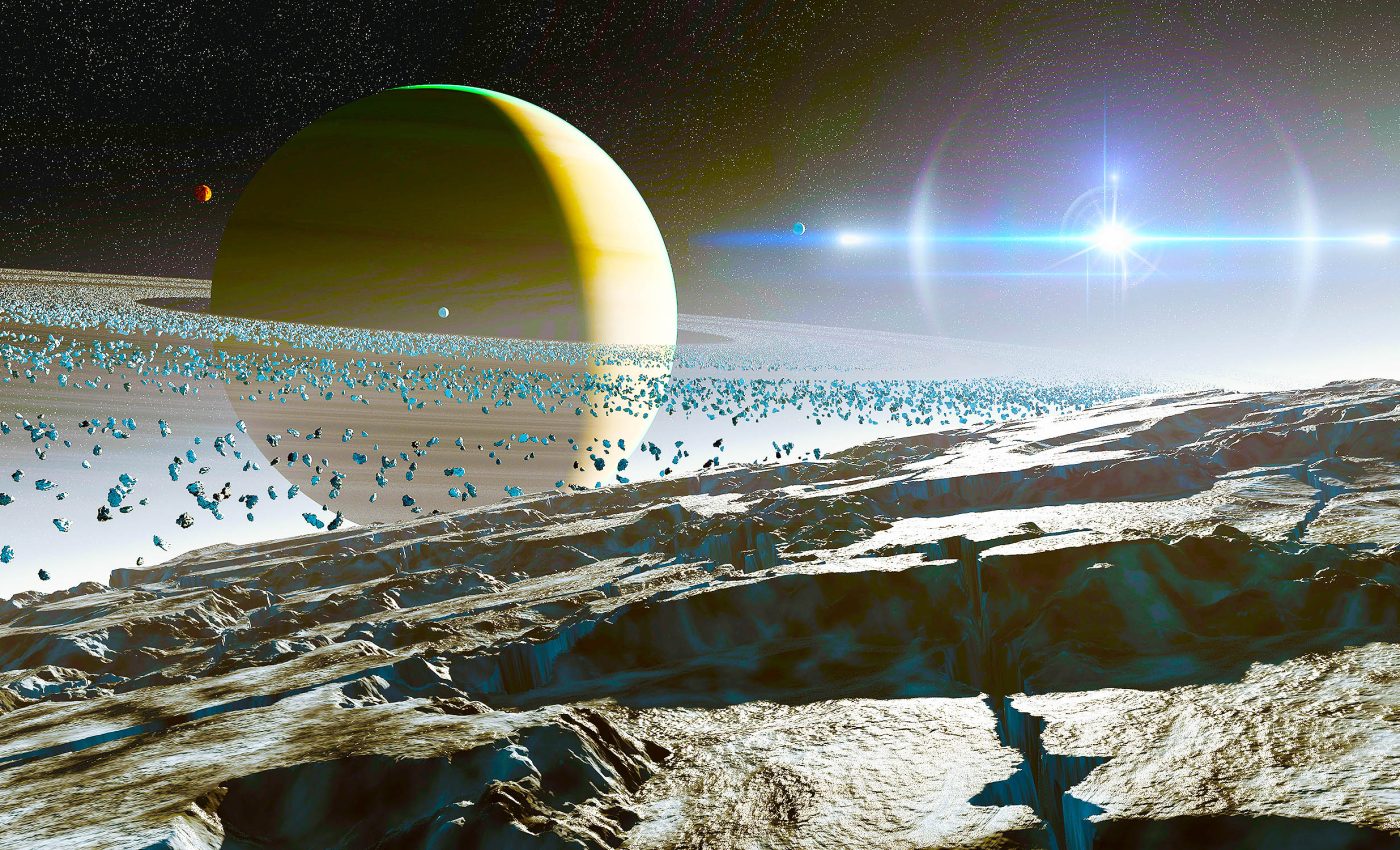
Life could survive near the surface of Europa and Enceladus
Europa, a moon of Jupiter, and Enceladus, a moon of Saturn, have subsurface oceans beneath their ice crusts that may harbor life.
A NASA experiment suggests that if these oceans harbor life, the organic molecules (e.g., amino acids, nucleic acids) that could signal life might survive just beneath the surface ice despite harsh radiation.
This discovery means that robotic landers sent to these moons wouldn’t need to dig very deep to find signs of life.
Sampling the subsurface oceans
“Based on our experiments, the ‘safe’ sampling depth for amino acids on Europa is almost eight inches (around 20 centimeters) at high latitudes of the trailing hemisphere (hemisphere opposite to the direction of Europa’s motion around Jupiter) in the area where the surface hasn’t been disturbed much by meteorite impacts,” said lead author Alexander Pavlov, an astronomer at NASA’s Goddard Space Flight Center in Greenbelt, Maryland.
Pavlov noted that subsurface sampling is not required for the detection of amino acids on Enceladus – these molecules will survive radiolysis (breakdown by radiation) at any location on the Enceladus surface less than a tenth of an inch (under a few millimeters) from the surface.
These nearly airless moons are inhospitable on their surfaces due to high radiation from their host planet’s magnetic fields and cosmic events like exploding stars.
However, their subsurface oceans, heated by tidal forces, could potentially harbor life if they also contain the necessary elements and compounds.
Radiolysis experiments
The research team conducted radiolysis experiments using amino acids as representatives of potential biomolecules.
Amino acids can be created by both biological and non-biological processes, but finding specific types on these moons could be a sign of life since they are used to build proteins by terrestrial life.
Proteins are crucial for life as they form enzymes that speed up or regulate chemical reactions and create structures.
The team tested the survival of amino acids under conditions simulating those on Europa and Enceladus by mixing them with ice and exposing them to gamma-rays.
The experts also tested amino acids within dead bacteria and mixed with silicate dust to simulate possible mixing with meteorite material.
Rates of amino acid destruction
The experiments helped determine the rates at which amino acids break down under radiation, called radiolysis constants.
This data allowed the team to calculate the depths and locations on Europa and Enceladus where amino acids would survive radiolytic destruction.
The experiments showed that amino acids degraded faster when mixed with dust but slower when originating from microorganisms.
“Slow rates of amino acid destruction in biological samples under Europa and Enceladus-like surface conditions bolster the case for future life-detection measurements by Europa and Enceladus lander missions,” said Pavlov.
“Our results indicate that the rates of potential organic biomolecules’ degradation in silica-rich regions on both Europa and Enceladus are higher than in pure ice and, thus, possible future missions to Europa and Enceladus should be cautious in sampling silica-rich locations on both icy moons.”
The research team suggests that bacterial cellular material may protect amino acids from reactive compounds produced by radiation, potentially explaining why amino acids survived longer in bacteria.
Future missions aiming to detect life
The study provides crucial data for future missions aiming to detect life on these icy moons, indicating that amino acids and other biomolecules could be found at relatively shallow depths.
Understanding the survival rates of amino acids and other biomolecules under the conditions found on Europa and Enceladus is critical for astrobiology and the search for life on these moons.
If life exists in the subsurface oceans of these moons, the organic molecules essential for life processes might be transported to the surface by geological activity such as geysers or through the slow churning of the ice crust.
These findings are vital as they inform the design and implementation of future missions that will search for signs of life on these moons. The goal is to ensure that the sampling methods are sufficient to detect the preserved organic molecules that could indicate biological processes.
Predicting where to search for life
Additionally, the study’s findings underscore the importance of selecting the right locations for sampling. Areas with less silica-rich dust might be more promising for detecting preserved amino acids.
As missions to these moons are planned and developed, such insights will guide scientists in making informed decisions about where to focus their efforts to maximize the chances of discovering signs of life.
The research contributes to a broader understanding of how life might survive in extreme environments beyond Earth.
By studying the preservation of organic molecules under harsh conditions, scientists can better predict where to look for life in our solar system and beyond, expanding our knowledge of life’s potential distribution in the universe.
The study is published in the journal Astrobiology.
—–
Like what you read? Subscribe to our newsletter for engaging articles, exclusive content, and the latest updates.
Check us out on EarthSnap, a free app brought to you by Eric Ralls and Earth.com.
—–













